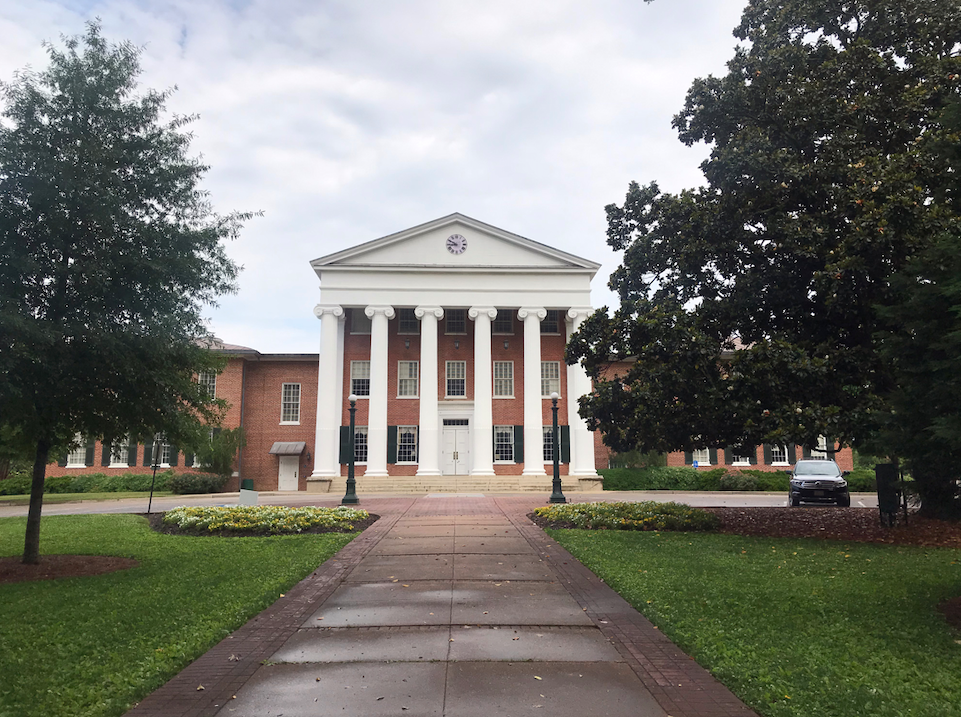A touching invention that changed transportation
Published 10:00 am Wednesday, October 16, 2024
By Gene Hays
MSgt, USMC (Ret)
When Sam was born, people wrote letters, and it was a letter that gave Sam the sad news. It was a letter that changed his life.
In February 1825, Sam was living in Washington, D.C. He was an itinerant painter, a good one, but he wasn’t making a solid living with his art. At age 34, he was older than his heroes had been when they created their masterpieces.
Sam had traveled to Washington to pursue what could’ve been his big break: the city of New York promised him a $1,000 commission to paint Marquis de Lafayette, who was returning as a hero to the country he helped make free. “We must begin to feel proud of your acquaintance,”
Sam’s wife, Lucretia, wrote to him from their home in New Haven, Connecticut, a four-day trip away. She was expecting their third child. “I think now that we can indulge a rational hope that the time is not very far distant when you can be happy in the bosom of your much loved family,” she wrote. And Sam indulged that hope.
As he worked in Washington, he wrote to Lucretia, “I long to hear from you.” But he wouldn’t hear from her. Lucretia, at the time Sam wrote to her, was dead. Sam received a letter from his father: “My heart is in pain and deeply sorrowful, while I announce to you the sudden and unexpected death of your dear and deservedly loved wife.”
Lucretia had died a few days earlier of an apparent heart attack while recovering from childbirth. Sam, whose life had been filled with disappointments and lost commissions, suffered another defeat, this time caused by slow communication. He rushed back to his family, but by the time he got back to New Haven, Lucretia was already buried.
Seven years later, Sam was on a boat, returning from a trip to Europe, where he’d studied painting and developed a scheme to recreate the masterpieces of the Louvre for Americans—it too failed.
On board, he got involved in conversations about electromagnetism, and how it could travel through wires, and how it could send information faster than anyone had previously imagined. Back in the United States, Sam got a job at New York University.
He went to lectures on electricity. He secretly began working on a way of encoding and sending messages. He also ran, unsuccessfully, for mayor of New York City on an anti-immigrant platform.
There had been experiments with sending electricity through wires before Morse was born. And there had been telegraph machines for years already, mostly in Europe. But these were semaphores, a method of visual signaling, usually by means of flags or lights, to transmit messages between distant points.
The machines had too many wires and complex signals that couldn’t travel far. Operators sometimes used telescopes to see the messages; others had the idea of making them more efficient. If you haven’t recognized his name, Samuel Morse, with his tenacity and his code of dots and dashes, went in front of Congress, without success. In 1838, he returned to Washington, to the scene of his greatest heartbreak, and tried to convince lawmakers to fund his telegraph.
Again, he failed.
Four years later, Sam went back to Washington and rigged a telegraph between two committee rooms to show off the technology that might have given him a chance to share a final few moments with Lucretia, or at least to attend her funeral. Congress gave him $30,000.
He strung the wire from Washington to Baltimore. And on May 24, 1844, he sent the first message. Soon, all types of news and messages were being tapped out across the country. The invention transformed communication, business, and the idea of news. It sped up the world, cutting the delivery time of a message from Washington, D.C. to New Haven from four days to under four seconds.
It changed how ships sent messages to each other and made military communications much faster. It proved to be a godsend during The War Between the States, enabling on the spot reporting of casualties, battle plans, and movements. It’s impossible to know how much Lucretia’s death inspired Morse’s telegraph.
The events are years apart, and Morse’s letters don’t reveal everything—though he did tell his older daughter that she “could not know the depth of the wound that was inflicted” when he became a widower. Morse remarried in 1848. He had four more children.
He defended his patents and continued his life as an inventor.
But Morse isn’t remembered for his political views or his paintings. He’s remembered for the invention that shrank distances and shortened time and might have made it possible for him to say goodbye.
Gene Hays is an author and historian with books available on Amazon.com.






